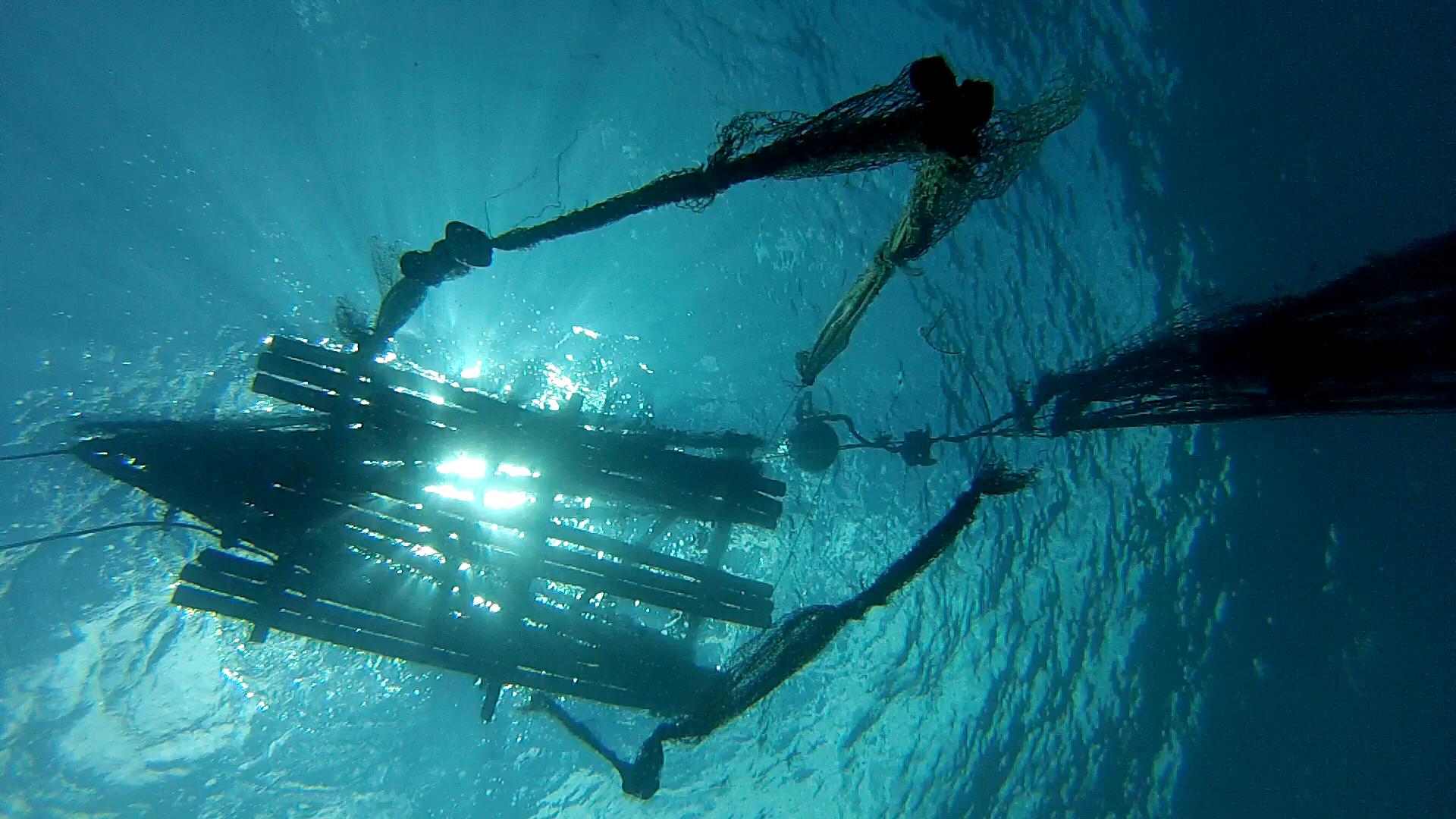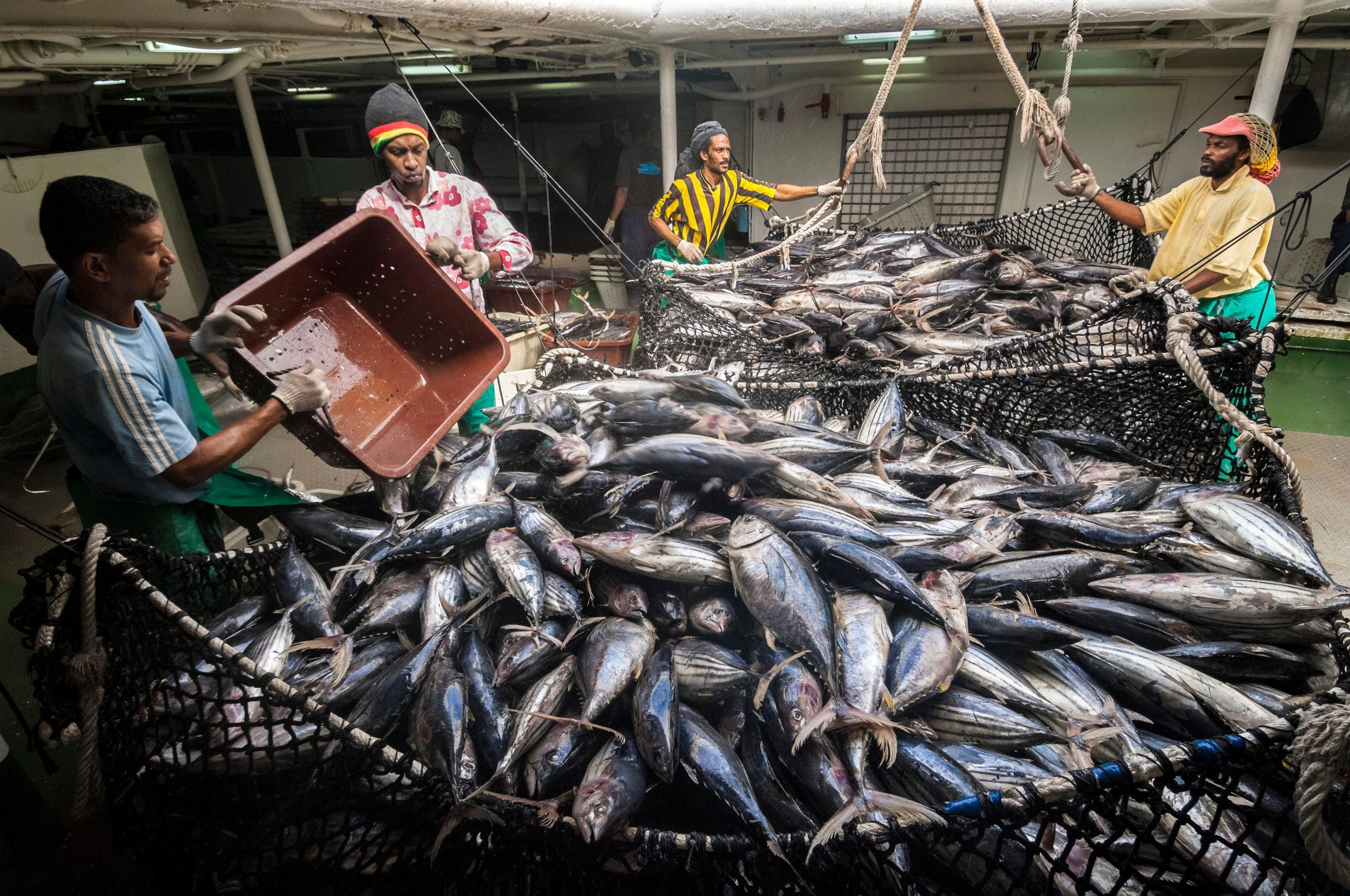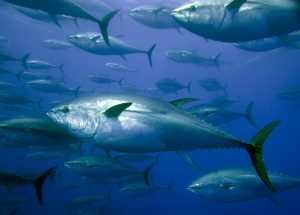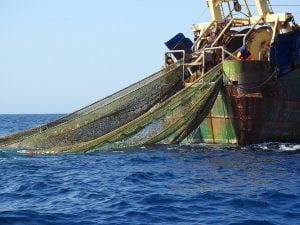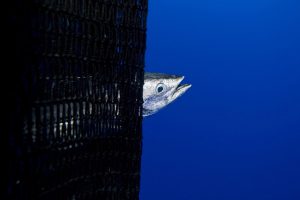Anthony Raj is the owner and captain of a fishing boat that has been hunting tuna in the Indian Ocean for years.
He and his crew of 11 are preparing for a high seas fishing expedition later in May. It will take them hundreds of nautical miles away from their home in Thathoor, a coastal village in the southern Indian state of Tamil Nadu.
“The ocean is like our mother,” Raj tells Dialogue Earth. “Whenever we turn to it for sustenance, it never sends us back empty handed. This connection is real.”
When he next takes to the sea, Raj will also be party to a long-running scientific and political row over how tuna fishers should work.
Thousands of long-line fishers from coastal countries, like himself, find it difficult to locate tuna schools in the Indian Ocean’s vast expanse. The longer it takes them to do so, the longer they spend at sea, and the more it costs them.
But “chasing free-swimming tuna is a passion for us and we don’t mind if it takes a bit longer”, he says. “We do not use any deceptive methods like so many international fleets do.”
Raj is referring to artificial floating structures with hanging nets and tracking buoys. Some fishers deploy these “drifting fish aggregating devices” (dFADs), which, as floating objects, attract tuna to hide under and around them, making them easier to catch.
Overseeing the Indian Ocean
The continued use of dFADs will feature prominently in the upcoming 28th session of the Indian Ocean Tuna Commission (IOTC). This regional fisheries management organisation oversees the catching of tuna and tuna-like species including yellowfin, bigeye, skipjack and bluefin.
On 13 May in Bangkok, IOTC member states will try to agree a way forward after a proposal to regulate dFADs last year made by Kenya failed to be implemented despite support from other nations. (Political manoeuvring led to the country eventually opposing its own resolution.)
“FADs will be a long-drawn negotiation,” says Glen Holmes, a marine ecologist and senior officer of environmental NGO the Pew Charitable Trusts’ international fisheries project.
“There are a lot of proposals being put forward this year… and that may make it even more difficult to be able to negotiate out a consensus agreement.”
Improvements in the way tuna are fished seem necessary. According to IOTC estimates, both yellowfin and bigeye tuna are overfished in the Indian Ocean, with the former having been in such a state since 2015.
An ‘ecological trap’?
Introduced in the mid-1980s and now deployed on a vast scale in the Indian Ocean, drifting FADs have been described as an “ecological trap” by critics. They say the devices lead to unnatural behaviour that breeds unhealthy tuna. According to one estimate from WWF – which opposes FAD use – 32 juvenile tuna are caught for every adult yellowfin, upsetting the population balance.
The ease with which the devices make it possible to catch tuna may ultimately be facilitating overfishing, some scientists and campaigners say.
Other marine life also have a proclivity for sheltering under the structures. FAD fishing has been linked with “massive shark mortality” from direct entanglement in the devices, and accused of increasing bycatch of animals such as turtles that shelter around them when boats come to scoop up tuna.
Abandoned and lost FADs add to the marine waste problem and can damage coral reefs if they reach shores.
The benefits of aggregators
FADs have their fans, though, especially among purse seine fishers.
What is purse seine fishing?
Purse seine fishing boats use vertical nets – the ‘seine’ – that can be kilometres long to surround fish. These nets are then pulled together – ‘pursed’ – at the bottom to complete the catch.
Forty-six purse seiners of around 90 metres in length operate in the Indian Ocean, according to the IOTC, mostly flagged to the Seychelles and European Union nations. EU vessels accounted for almost a third of the tropical tuna caught in the Indian Ocean in 2022, largely through the use of dFADs, according to conservation organisation Blue Marine Foundation. Together, the 46 purse seiners are thought to deploy around 20,000 dFADs every year, the IOTC adds.
“Catching tuna is a costly activity,” says K. Mohammed Koya, a fisheries scientist at India’s Central Marine Fisheries Research Institute. “FADs have become unavoidable for the purse seine industry. Without it, they won’t be able to operate.
“But there must be regulation, because FADs are highly problematic.”
Globally, FAD-assisted fishing contributes more than half of the tuna purse-seine catch. Advocates say it can reduce fuel use as it offers vessels a better chance of finding tuna quickly.
Some studies do show lower fuel consumption with FAD use than without. But other research notes that vessels relying on FADs tend to be bigger and could therefore still use more fuel per tonne of tuna landed than others, such as Raj’s long-line boat.
Seeking closure
Delegates at the 28th IOTC session this month will discuss several dFAD proposals.
There seems to be broad agreement that they should, in future, be made of biodegradable material, and that there should be a limit on the number each boat can use.
Each FAD is usually attached to a single buoy. The European Union and South Korea are separately pushing to limit the number of buoys a vessel can use to 260 by January 2026. A more ambitious joint proposal from Indonesia, Pakistan, Somalia, and South Africa wants a limit of 200 buoys by that date, roughly halving the 20,000 currently in use if the fleet remains at 46 vessels.
A suggestion of a temporary ban on dFAD use has also been mooted by the four countries. The joint resolution proposes a 72-day FAD ban starting in July 2025 to help rebuild overfished yellowfin and bigeye stocks. It also calls on member states to “take all necessary measures” to ensure their purse seine vessels comply.
Several conservation groups are backing this.
“A ban on FADs for three months is the most realistic and effective measure to rebuild yellowfin and big eye populations,” says Frédéric Le Manach, scientific director at Bloom, a French marine conservation non-profit. “But there is an utter lack of efficiency from FAO [the UN Food and Agriculture Organization], and IOTC has clearly failed over the past 20 years to address this critical situation.”
When you look at the science, even the data, it clearly shows that if we want to solve the issue of overfishing in the Indian Ocean… then we need to tackle the issue of FADsFrédéric Le Manach, scientific director at French marine conservation non-profit Bloom
This proposal has been ruffling feathers. The Korean resolution makes a tacit reference to a ban, suggesting that the IOTC Scientific Committee and IOTC working group on FADs should provide scientific advice on the issue. Meanwhile, the European Union’s proposal does not mention the issue – which derailed last year’s attempt at regulation – at all.
The battle lines have been drawn for the next meeting.
“The EU is pretending that they want to have a proposal that is based on science,” says Le Manach. “But when you look at the science, even the data, it clearly shows that if we want to solve the issue of overfishing in the Indian Ocean, which is particularly acute, then we need to tackle the issue of FADs.”
Maëlys Dreux, a press officer at the European Commission, says: “The EU has consistently proposed to amend and tighten the management of drifting FADs since 2022. Unfortunately, it has not been possible to agree by consensus on fair, implementable measures on FADs so far.”
He adds that FADs may be too narrow a target. “A temporary closure of the FAD fishery would only concern a fraction of the total catches of tropical tuna. For this reason, the Scientific Committee of the IOTC has indicated that a wider-fishery closure would be a more effective tool to ensure the sustainable management of the stocks.”
‘Safeguard the ocean from exploitation’
As with many fisheries around the world, the Indian Ocean tuna’s has become a flashpoint for debates about economics, trade, traditions and the environment.
“The ideal solution is the European Union taking responsibility for its giant distant-water fleet and implementing conservation and management measures that put a stop to the ongoing overfishing,” says Jess Rattle, head of investigations for the Blue Marine Foundation.
“But at the moment, EU is taking orders from a handful of wealthy companies and industry lobbyists, many of whom sit on the EU delegation itself.”
Dreux says the EU “has regular dialogues with its partners where issues of mutual concern are discussed” and that “accusations of wrongdoing in this context are unfounded”.
When the debate happens at the IOTC’s May deliberation, Raj and his crew will likely be navigating the high seas, crossing dFAD-infested waters, aiming for a reef or two, far from India’s coast.
“I don’t remember how many times I have ventured into the ocean for the catch,” says Raj. “Each time I go, I am filled with a sense of wonder. But all of us are responsible to safeguard it from abuse and exploitation.”
Reporting for this story was supported by Journalismfund Europe under the Earth Investigations Programme.

